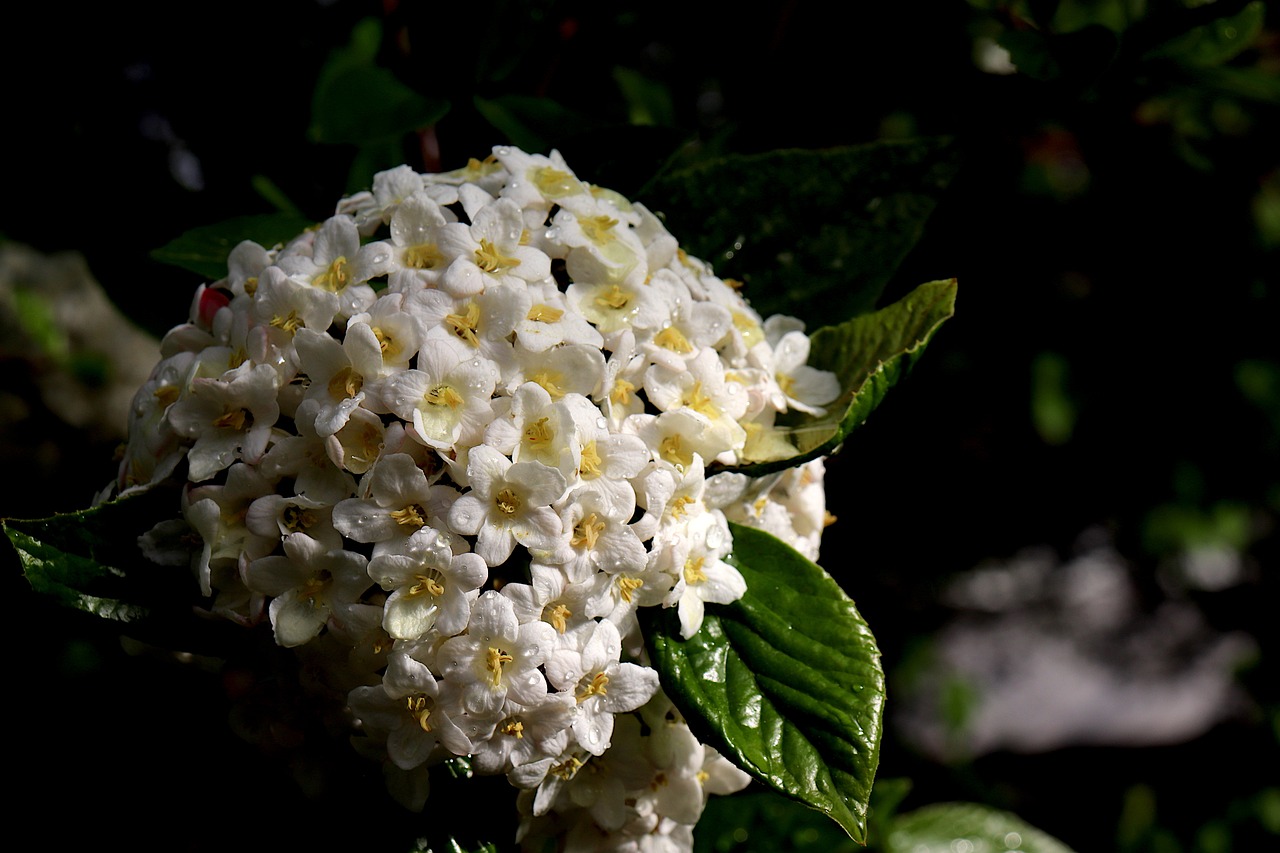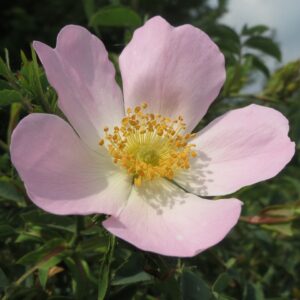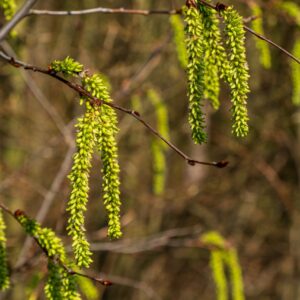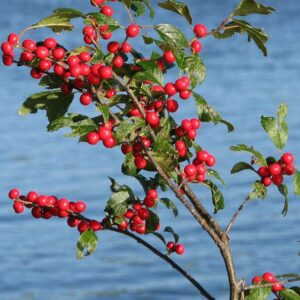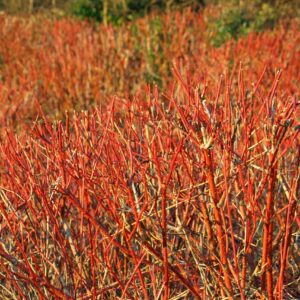White Arrowwood (Viburnum dentatum), also known as Arrowwood Viburnum, is a versatile and attractive deciduous shrub native to North America. It is valued for its showy flowers, vibrant foliage, and adaptability. White Arrowwood (Viburnum dentatum) is a versatile and attractive shrub that enhances garden landscapes with its seasonal beauty and ecological benefits. Its adaptability and ease of care make it a popular choice for a variety of garden settings.
Appearance:
Size: White Arrowwood typically grows 6-10 feet (1.8-3 meters) tall and wide, though it can sometimes reach up to 12 feet (3.7 meters) in optimal conditions. It has a rounded, dense growth habit with multiple stems.
Leaves: The leaves are ovate to elliptic, about 2-5 inches (5-12 cm) long. They have a serrated or toothed edge and are dark green and somewhat glossy on the upper surface, with a lighter, sometimes hairy underside. In the fall, the foliage turns shades of yellow, orange, or red, providing additional seasonal interest.
Flowers: White Arrowwood produces clusters of small, white flowers that bloom in late spring to early summer. The flowers are arranged in flat-topped or slightly rounded cymes that are typically 3-5 inches (7.5-12.5 cm) in diameter. Each flower has five petals and is mildly fragrant. The flowering period is generally from late May to June.
Fruit: After flowering, the shrub produces blue to black berries that ripen in late summer to early fall. The fruit is about 1/4 inch (0.6 cm) in diameter and can be quite attractive to birds and wildlife. The berries are edible but somewhat tart.
Bark: The bark is typically gray to brown and smooth when young, becoming more textured and rougher with age.
Habitat: White Arrowwood is adaptable and can thrive in a variety of conditions, including open woodlands, edges, and along stream banks. It prefers well-drained, moist soil but can tolerate a range of soil types, including clay and sandy soils. It is hardy in temperate climates and can be found throughout much of North America.
Uses:
Ornamental: White Arrowwood is popular in landscaping for its attractive flowers, colorful foliage, and decorative berries. It is often used in shrub borders, hedges, and naturalized plantings. It also works well in rain gardens and other settings where moisture is a consideration.
Ecological: The plant provides food and cover for wildlife. The flowers attract pollinators such as bees and butterflies, while the berries are a food source for birds and other wildlife.
Care:
Pruning: Prune White Arrowwood in late winter or early spring before new growth begins. Pruning can help maintain the shape and size of the shrub, as well as remove any dead or damaged branches. It can also be pruned after flowering to tidy up the plant.
Watering: The shrub prefers consistently moist soil but can tolerate periods of dryness once established. Regular watering is beneficial, especially during dry spells.
Fertilizing: A balanced, slow-release fertilizer applied in early spring can help support healthy growth and flowering.

